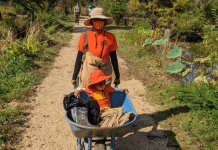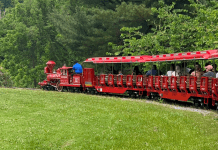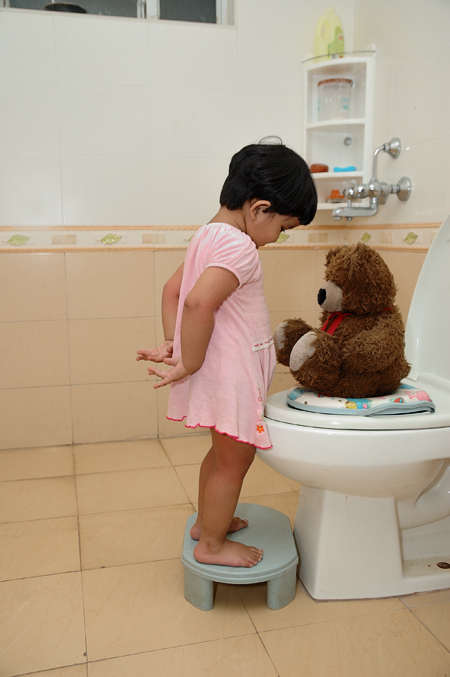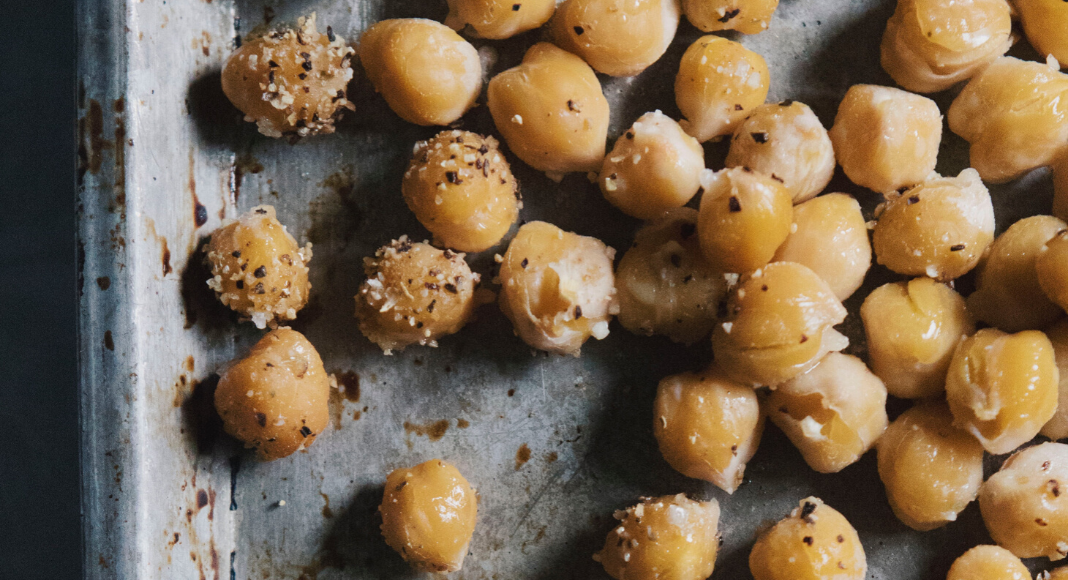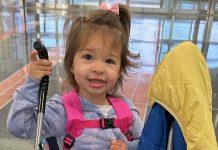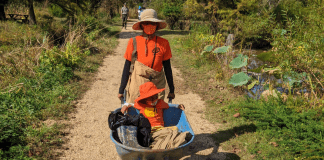So, it’s time to pee pee in the potty and you have no idea where to begin? Welcome to the world of potty training!
Anecdotally, I’ve heard from tons of parents who are exhausted and beyond frustrated with potty training. Do a quick Google search and you’ll see tons of resources out there to help with potty training because parents all over have struggled with the same topic. In this post, I’ll share some words of wisdom to help you along the way as well as some of the best resources I’ve sourced from local mamas.
When to start
As an early childhood educator, I helped many kids go through this important process before helping my own little one. One of the biggest takeaways I can share with you is the importance of waiting until your child is truly ready to potty training.
Truly ready is not at 3-years-old. It’s not at 18-months-old. It is whenever your child is truly ready for this enormous change of life. For some kids it will be super early, for others it may be super late. Both are totally fine! The stress many parents face comes from pushing too early. Just because we want them to be out of diapers (and to help the budget!), it doesn’t mean it is the best change for your child just yet.
One of the most important factors for potty training has to do with communication. Yep, nothing to do with interest in the expensive, fancy potty you bought. Communication is key. Children who can communicate their ideas or feelings regularly will be able to comprehend and express the internal feelings associated with elimination. Again, this may happen at very different ages depending on your individual child’s development.
How to talk about potty training
When your child is able to tell you when they are hungry, thirsty, or when they want something, they may be ready to start making the connection to their diaper. Before you whisk them away at their next diaper change, take a minute to ask them some questions.
“Your diaper looks full, did you go pee pee in your diaper?” or “Do you feel wet?”
The first time you ask, they may stare at you like you’re crazy. Follow up those questions with explaining the connection to a full diaper or feeling wet with going pee pee. For some kids, they may catch on quickly and tell you as soon as they pee because they want a fresh diaper. For others, they may never tell you because they know a diaper change interrupts their play. (They’re so stinking smart!)
You can always follow up these conversations with connections to using the potty yourself. “I need to pee pee but I don’t have a diaper. I’m going to sit on the potty and put my pee pee in here.” Use simple words, easy to understand phrases. No pressure! Just explaining what they do and what you do will start to bridge their understanding.
In a lot of my research, I noticed a common theme about the importance of using real body terminology. One of the main reasons for using, “penis” and “vagina” is to teach children the proper terms for their body to help safeguard them from sexual assault. Children who can name the proper body terms may more easily report incidents. I know, scary and uncomfortable to think about, however, it is never too early to keep them safe!
 Boys are harder than girls, right?
Boys are harder than girls, right?
Personally, I think this myth is completely unfounded. As a mom of a boy and as someone who has helped many children potty train, I can tell you that your child’s personality has a much larger connection to the easy of potty training than their gender. If they aren’t interested, they just aren’t going to do it.
What are some things to know?
Since there are already books written on this topic, I won’t try to recreate the wheel here. Besides waiting until they show they are ready and can communicate regularly, here are some other helpful things to know:
- Using sign language is a great way to help them communicate from an early age. Children may not be able to form the words orally, but they can move their hands/arms to indicate what they want to tell you.
- Children who use cloth diapers typically have an easier time potty training because they can feel wetness much more than children in disposable diapers.
- Save money on pull-ups. They feel and act like a diaper which can make this transition to underwear even more confusing.
- Simple clothing! Nothing is more frustrating for a kid who knows they have to go and can’t get their tights/pants/buttons off in time. Elastic waistband on pants are great!
- Toss some Cheerios/Fruit Loops into the toilet for aiming practice!
- Keep it fun! Forcing them to go, punishing them for accidents, or using any negative reinforcement will only make the hate potty training. Sticker charts can be helpful for some children who understand external rewards, but for many children, the excitement wears off after a few stickers. Long-term they need to learn to go without a reward, just because it is what they need to do.
- Pooping can be terrifying, even for a kid who constantly pees in the potty.
- Be as consistent as possible. Children who are ready to remove diapers completely need a reminder to use the potty every 30-60 minutes.
- Consistency between home and school is super important! Talk to your child’s caregiver about what potty training looks like during the weekday. Keeping this process as seamless as possible in any situation will make potty training much more successful.
- Always bring extra clothes. Even when your kid is using the potty constantly for months, bring the clothes. Life happens, kids get too busy to stop and pee; just clean them up and move on.
- Regressions are real. Just like all of those sleep regressions you survived, you will survive potty training regressions too. Big life changes (vacations, new daycares/school, new siblings, other important transitions) can cause regressions. Reteaching with consistency will get them back on track soon.
- Puppy training pads!!! Ok, if you don’t take away anything else from this post, please let it be this bullet point. A wise mama shared with me the puppy pad trick. You could also use a washable and reusable bed pad too! When you make your child’s bed, put a layer of puppy pads on top of their fitted sheet. Place another fitted sheet on top of the puppy pad. When your child has an accident in the middle of the night, just take off the top sheet and wet puppy pad. Boom! No more changing sheets in the darkness. Genius right?
Need some more resources? Check out some of my favorite resources compiled here:
Oh, Crap! Potty Training, by Jamie Glowacki is one of the highest rated potty training guides out there. It was a super easy read and her tips made so much sense. Highly suggest reading this book!
Toilet Seat with Built in Training Seat for the win! What we love about this is that children can sit on a regular toilet seat, but the rim fits them perfectly (choose round or elongated). And it is one less thing to clean up off the ground since it’s installed. Or you can always choose a training seat that you place on the toilet when in use.
Puppy Stool is a super cute step stool that helps kids reach the child-size insert on a regular toilet. Using an adaptor on a real toilet saves on more transition from the tiny potties to regular toilets later on.
Sally Neuberger and Claire Lerner are both licensed social workers in Maryland who have been highly recommended by local parents. They have helped successfully potty train many local kids!
This article does contain Amazon Affiliate links. If you choose to purchase through these links, then a teeny tiny portion would go to support our site and we would be so grateful!


